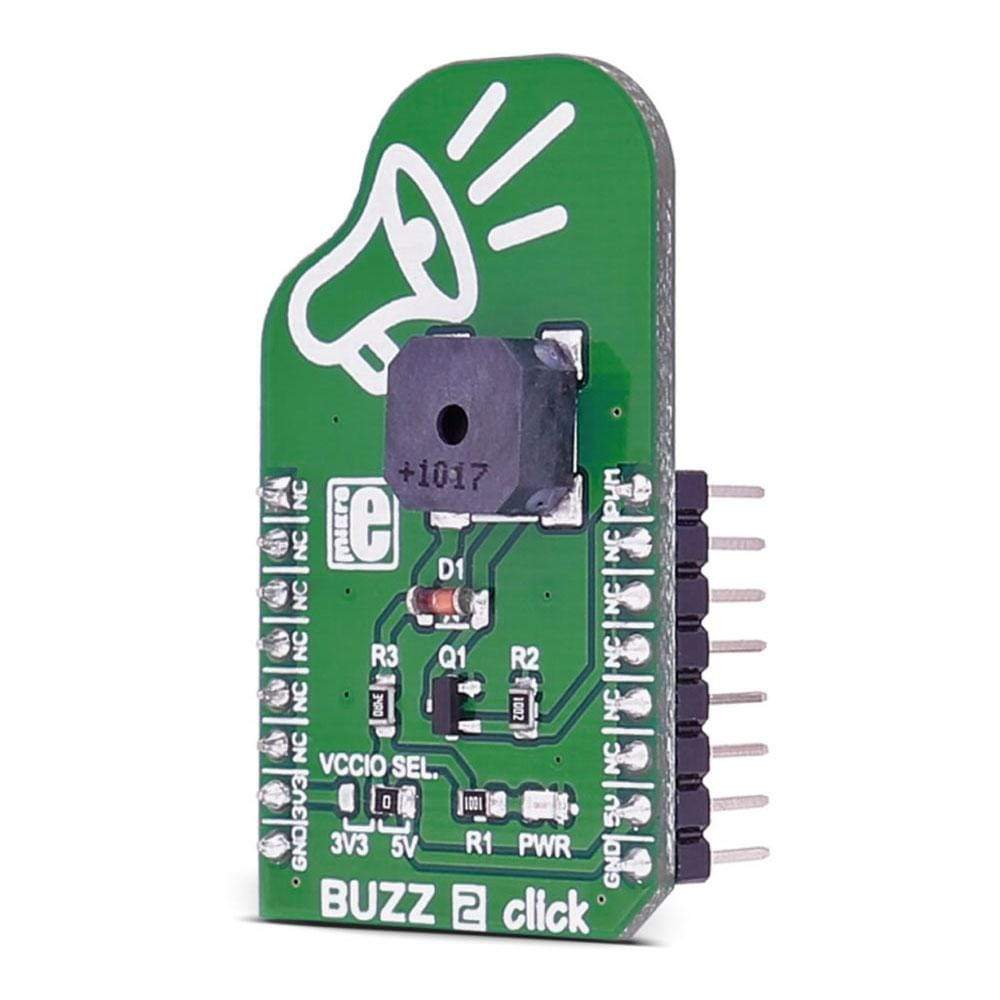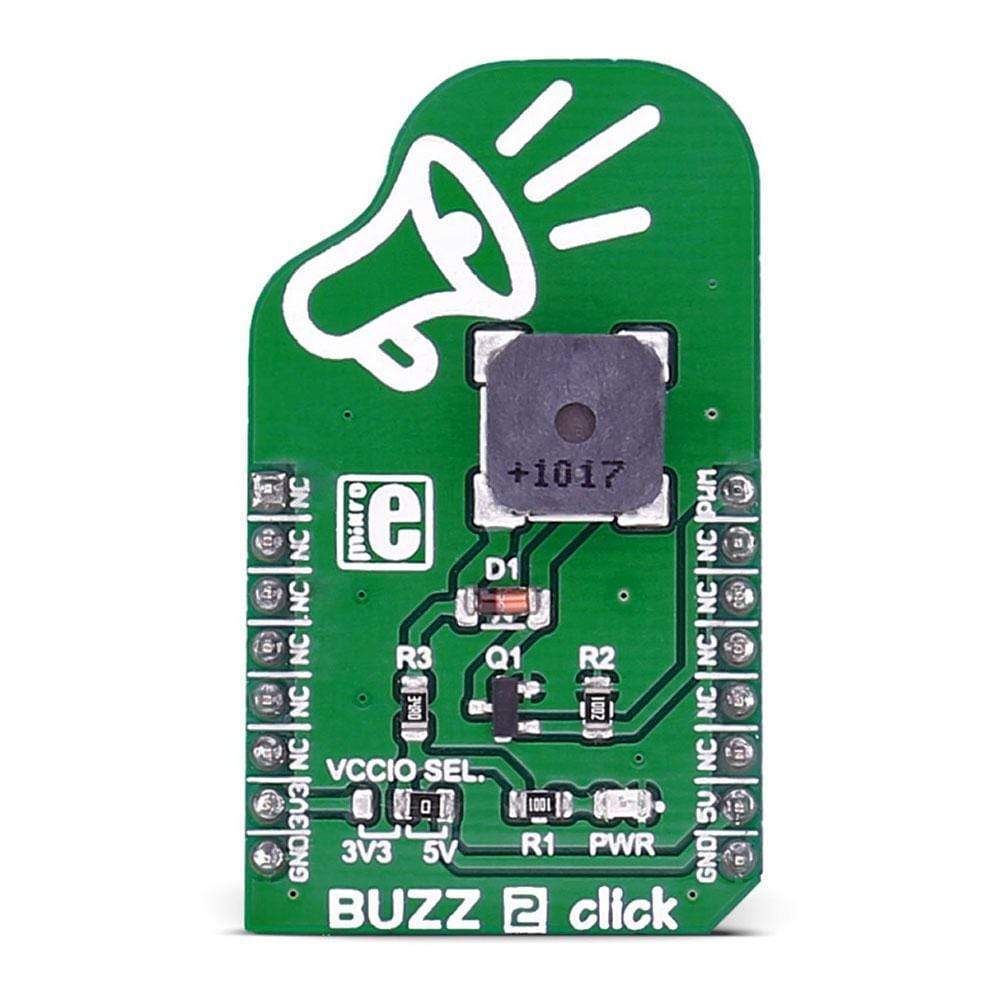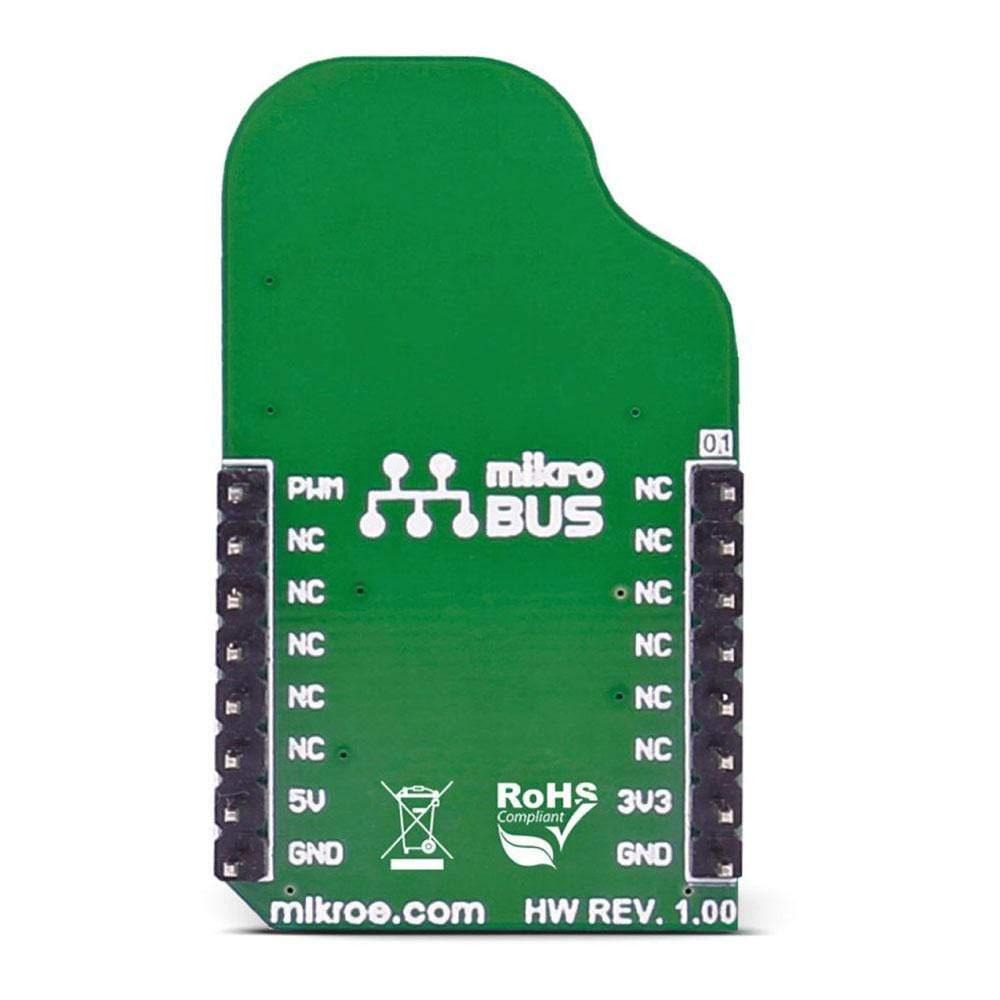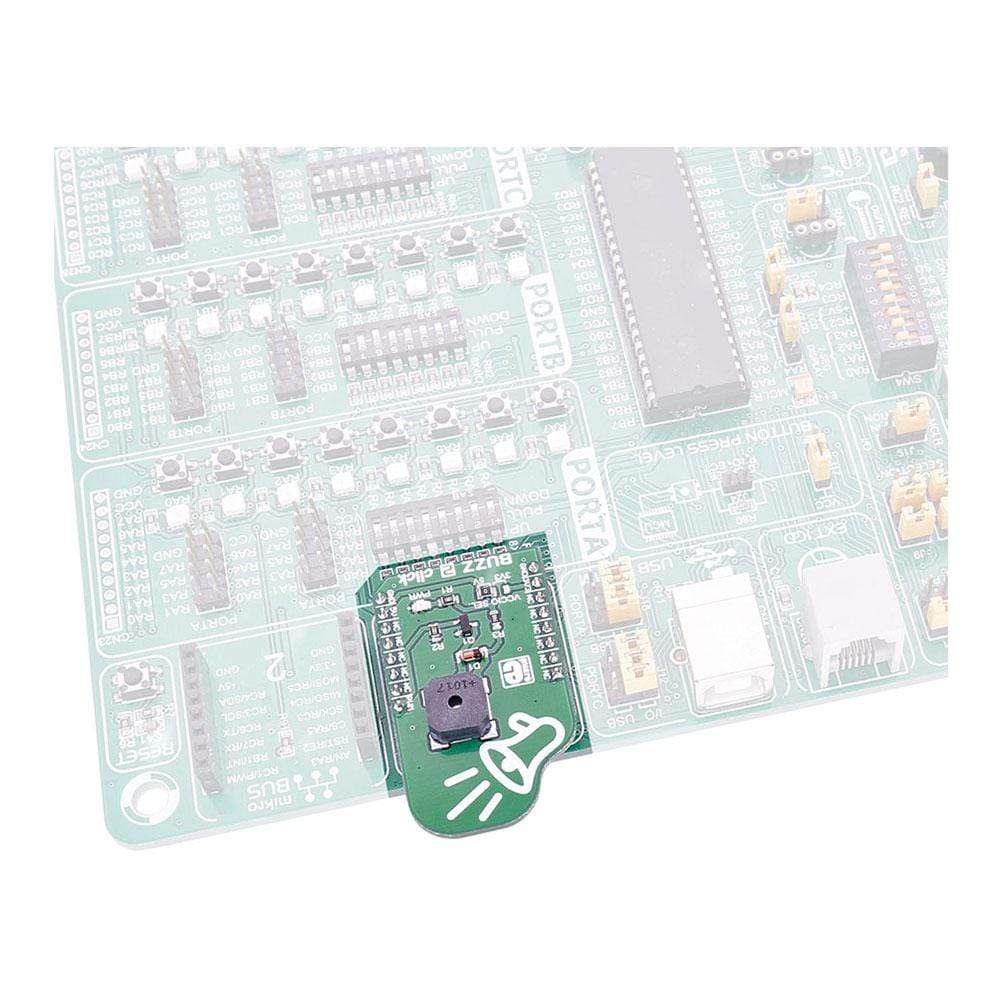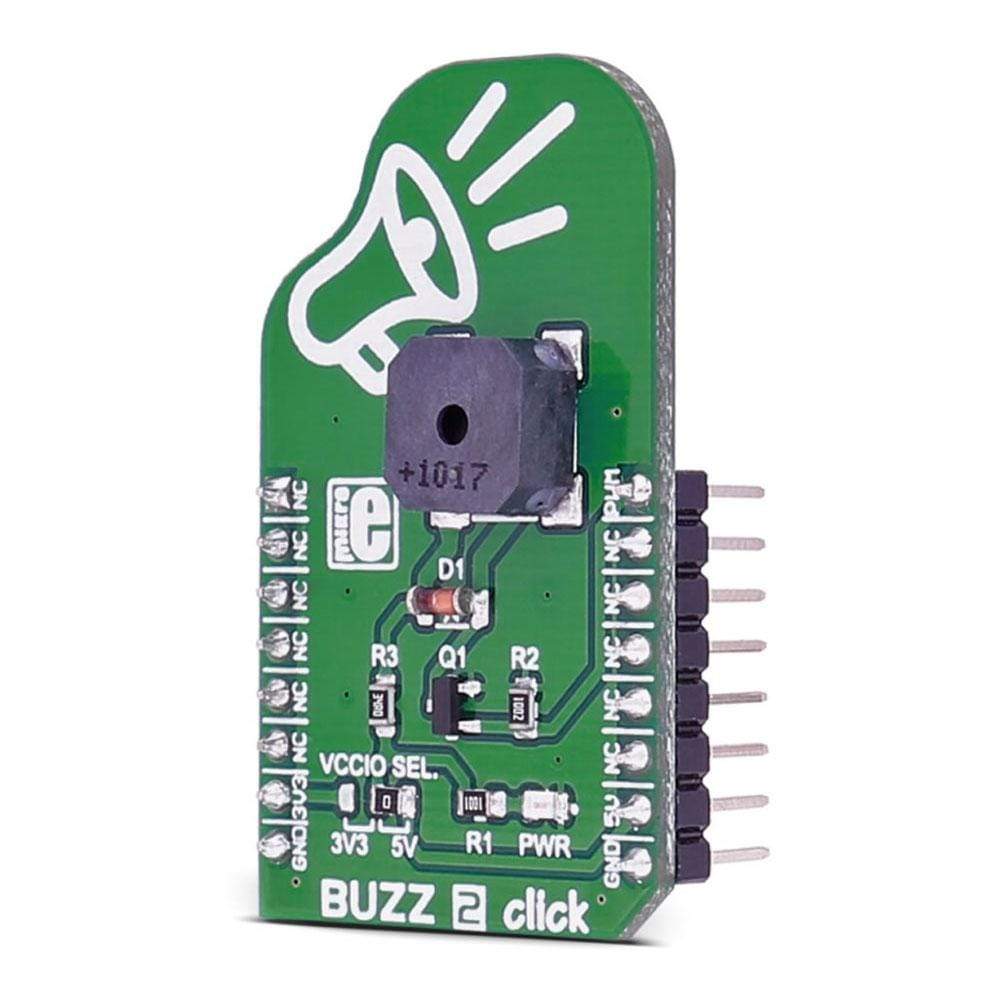
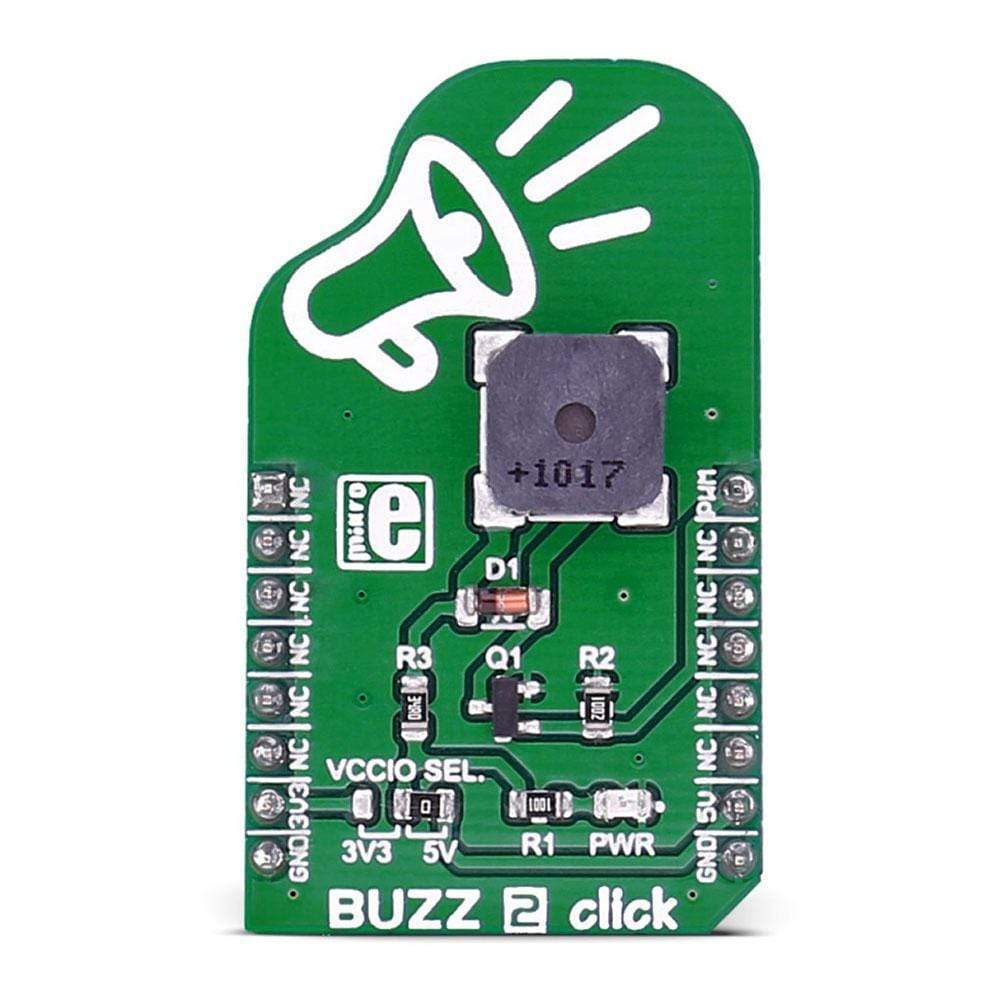
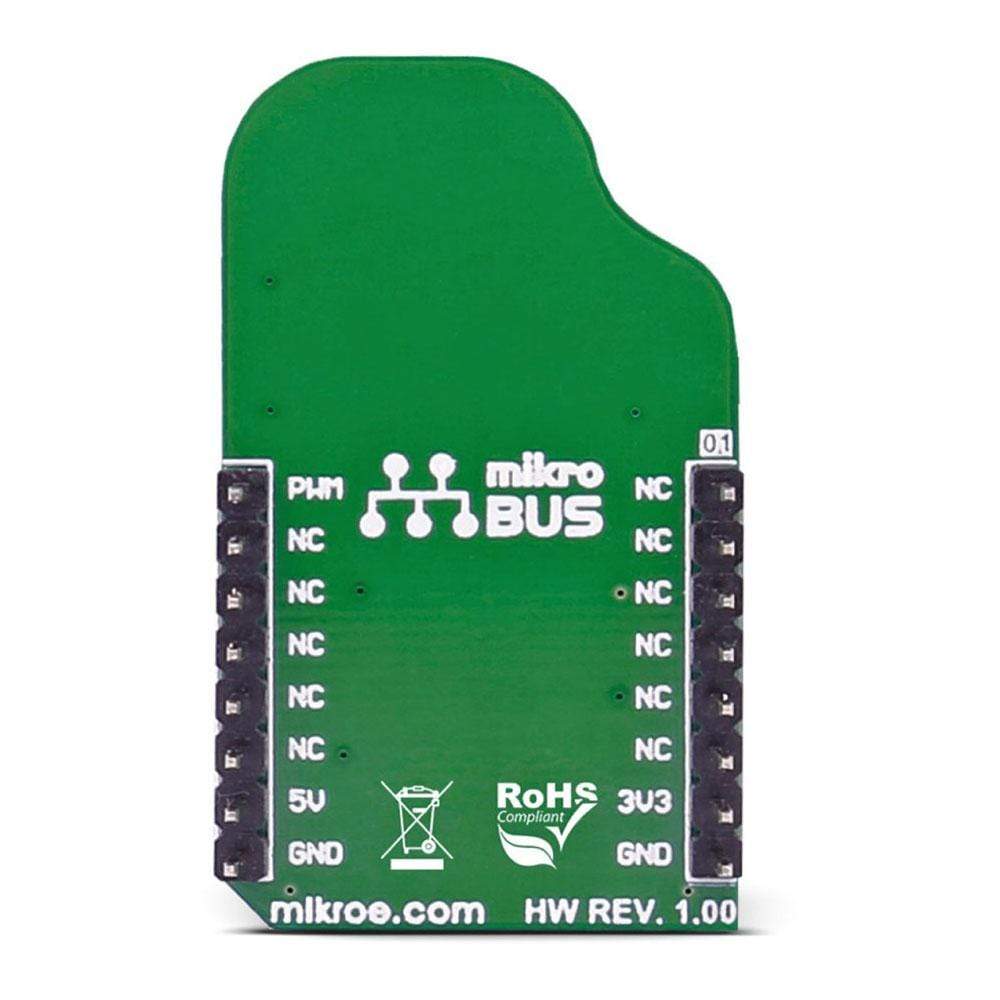

Overview
The Buzz 2 Click Board™ carries the CMT-8540S-SMT magnetic buzzer transducer.
The buzzer's resonant frequency is 4kHz. The Click Board™ is designed to run on either 3.3V or 5V power supply.
Downloads
Le Buzz 2 Click Board™ est équipé du transducteur de buzzer magnétique CMT-8540S-SMT.
La fréquence de résonance du buzzer est de 4 kHz. Le Click Board™ est conçu pour fonctionner sur une alimentation de 3,3 V ou 5 V.
| General Information | |
|---|---|
Part Number (SKU) |
MIKROE-2720
|
Manufacturer |
|
| Physical and Mechanical | |
Weight |
0.019 kg
|
| Other | |
Country of Origin |
|
HS Code Customs Tariff code
|
|
EAN |
8606018711246
|
Warranty |
|
Frequently Asked Questions
Have a Question?
Be the first to ask a question about this.

